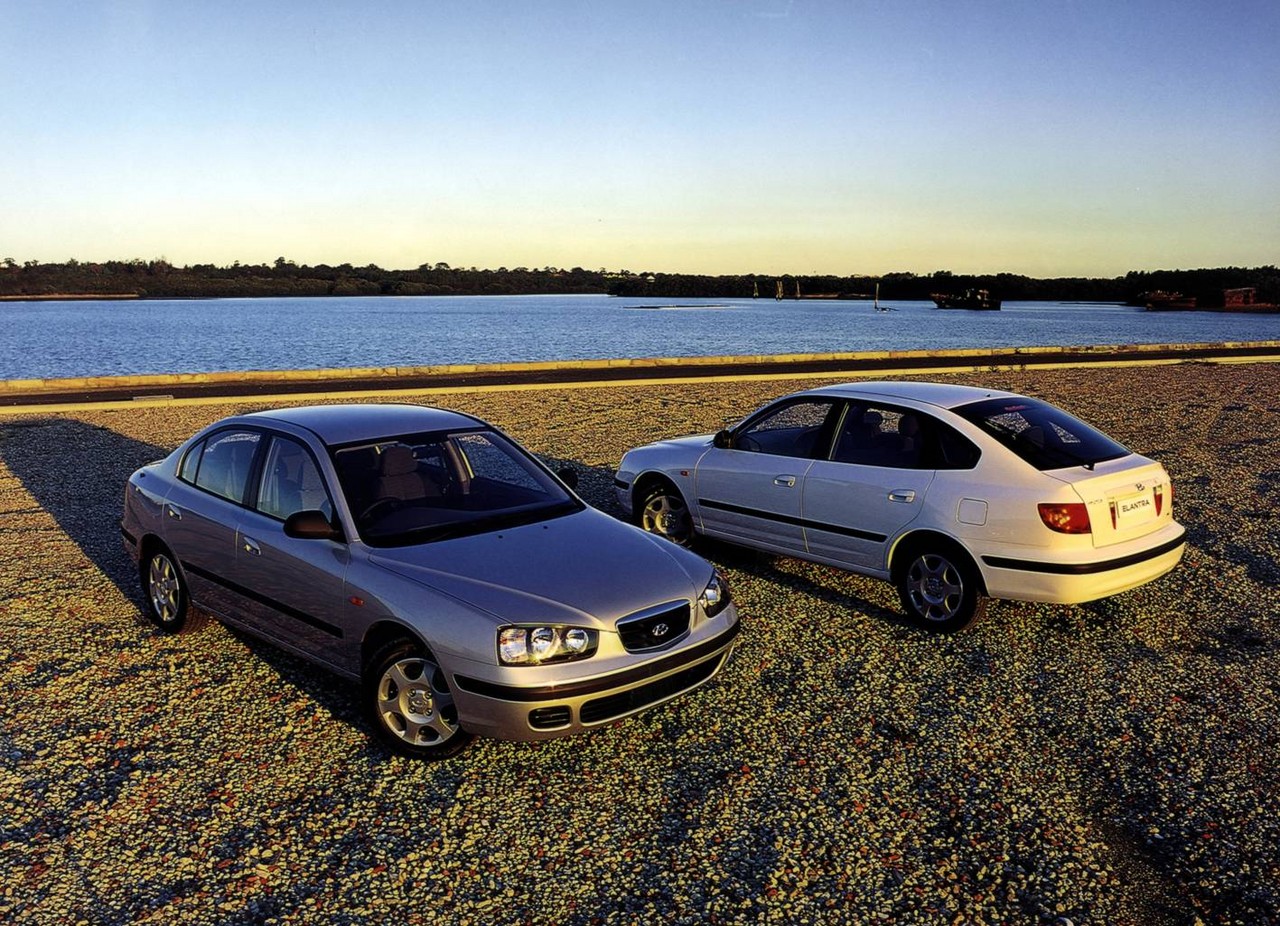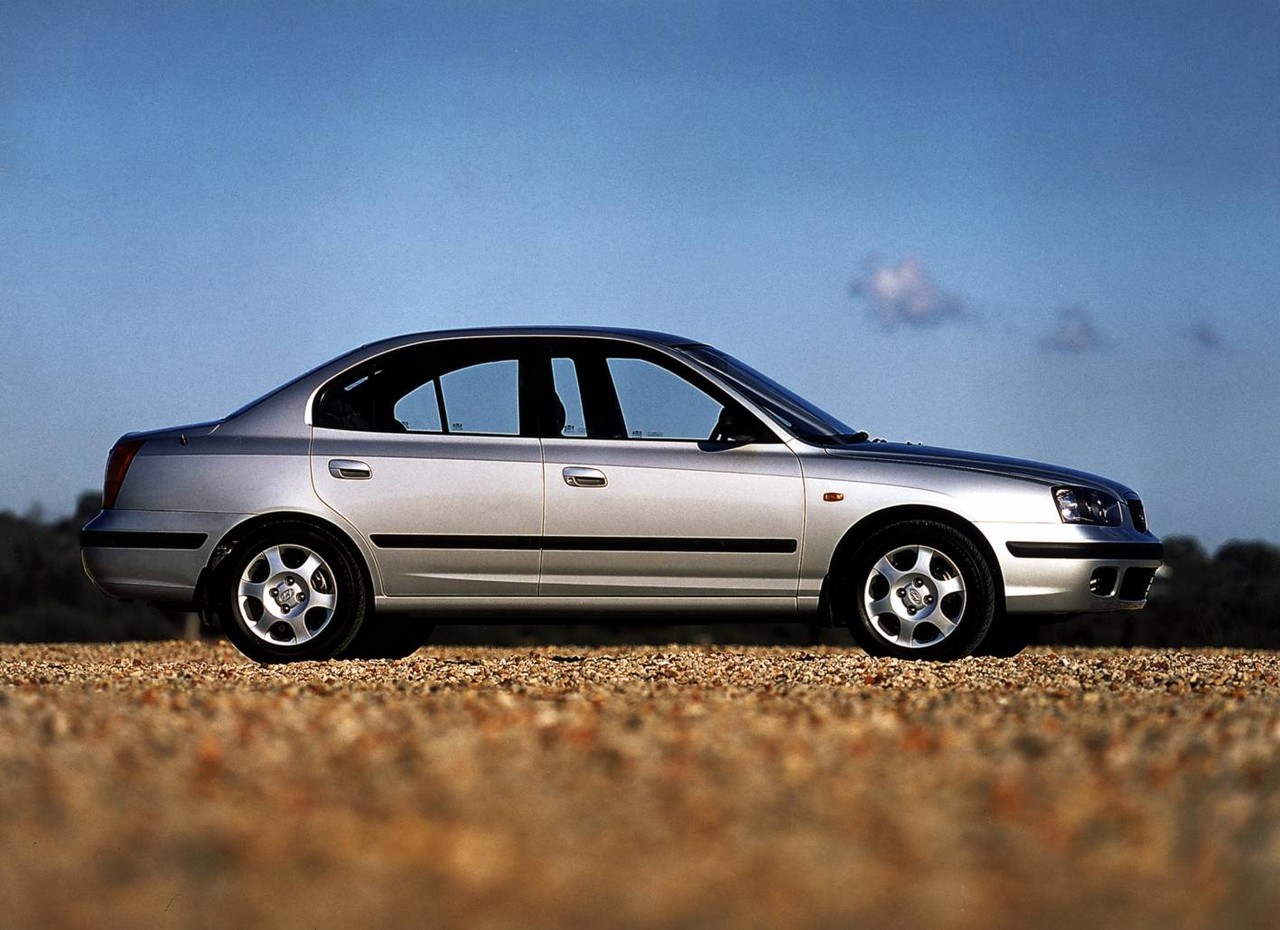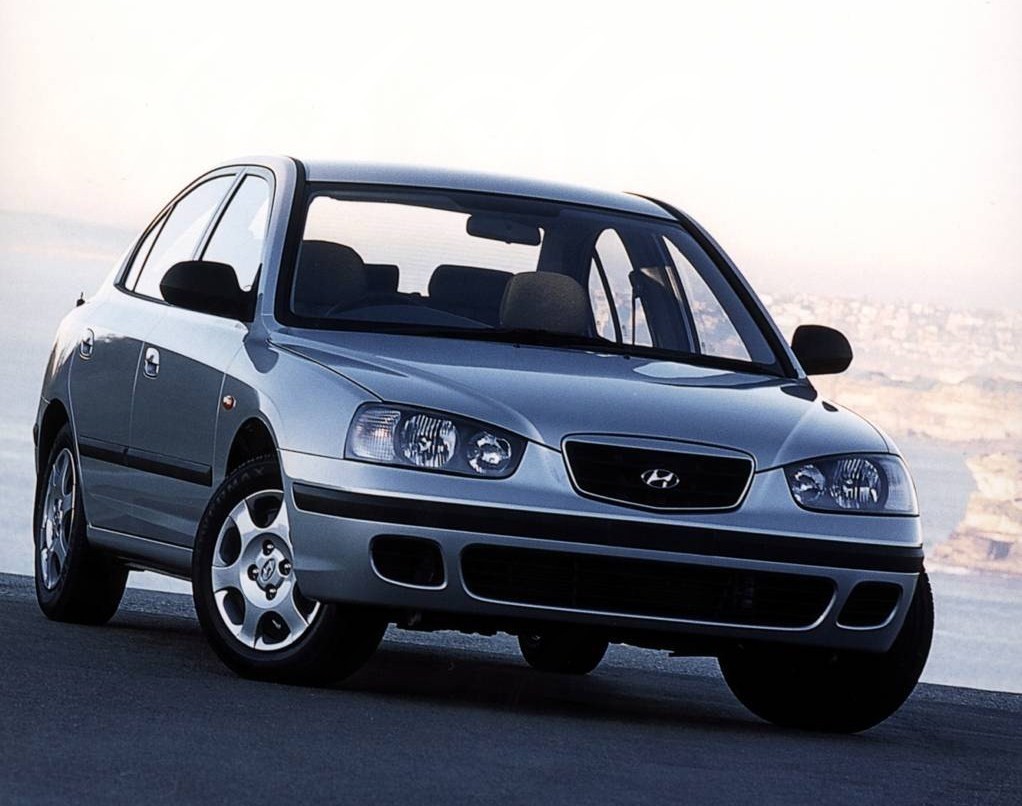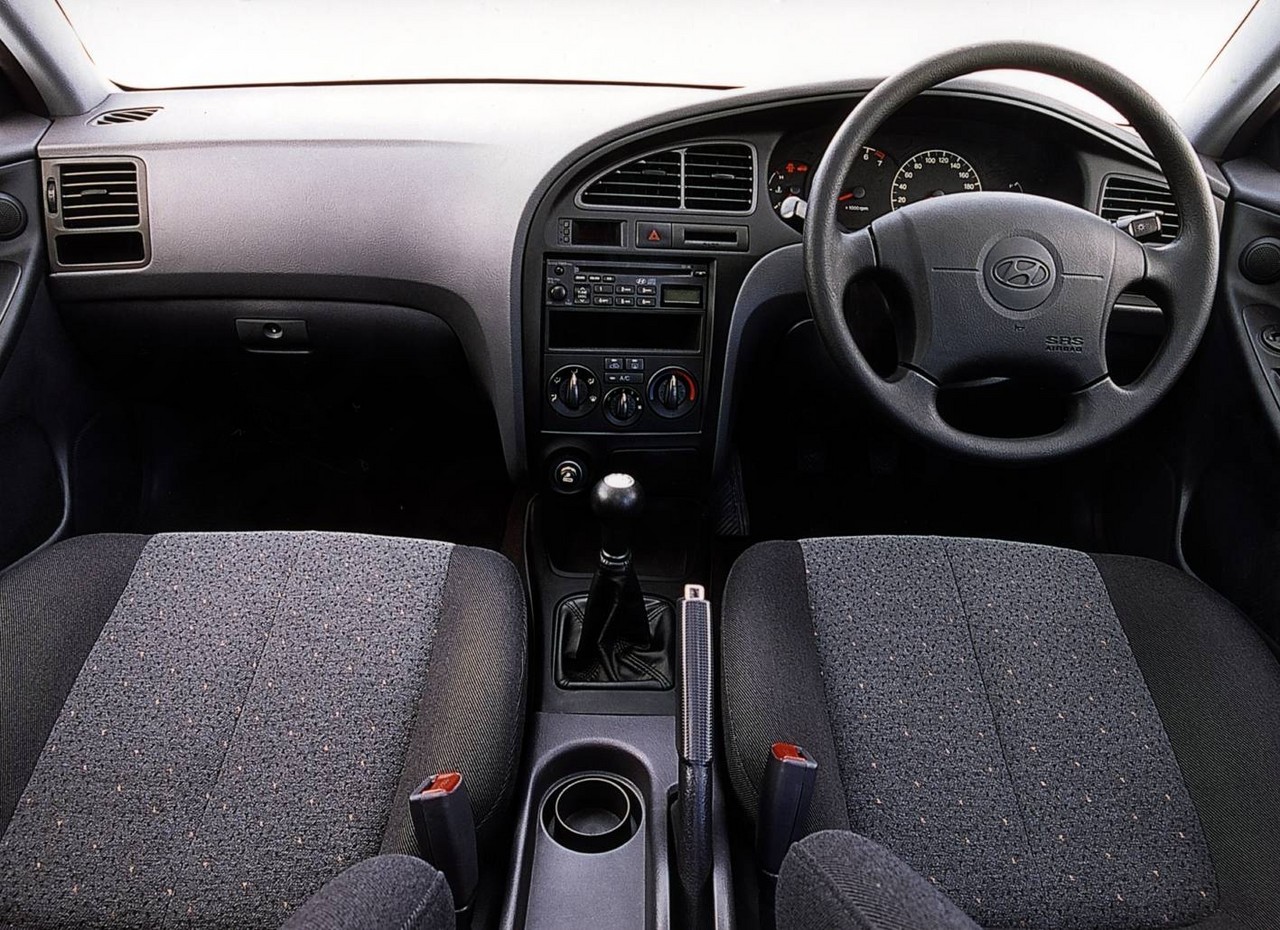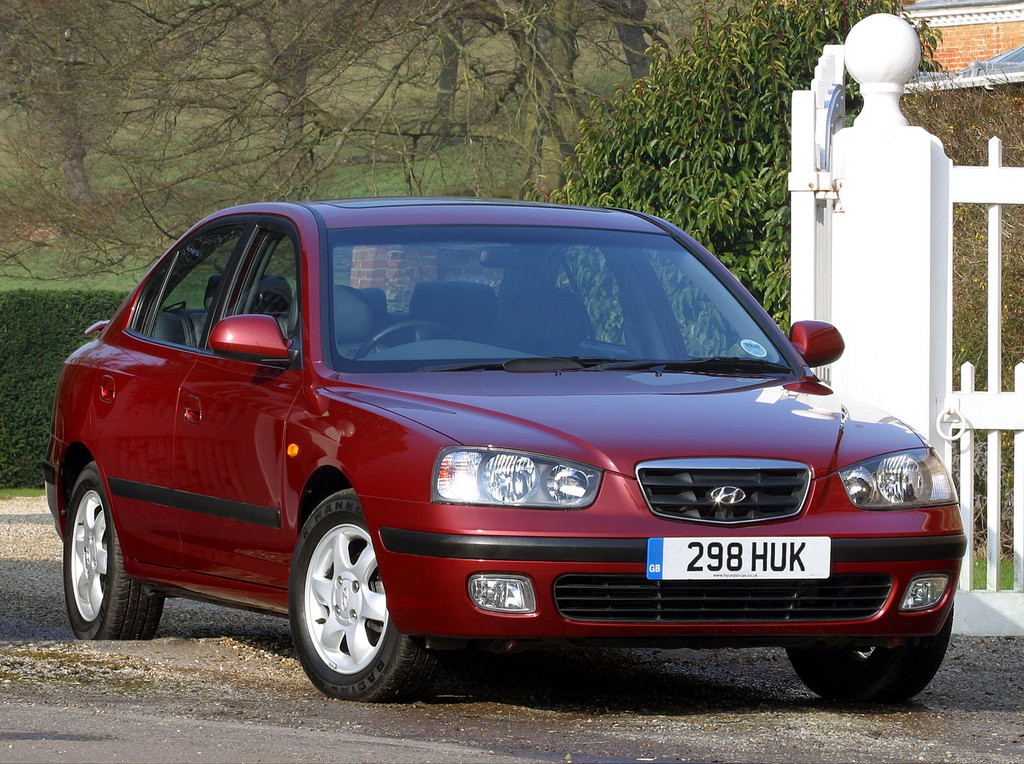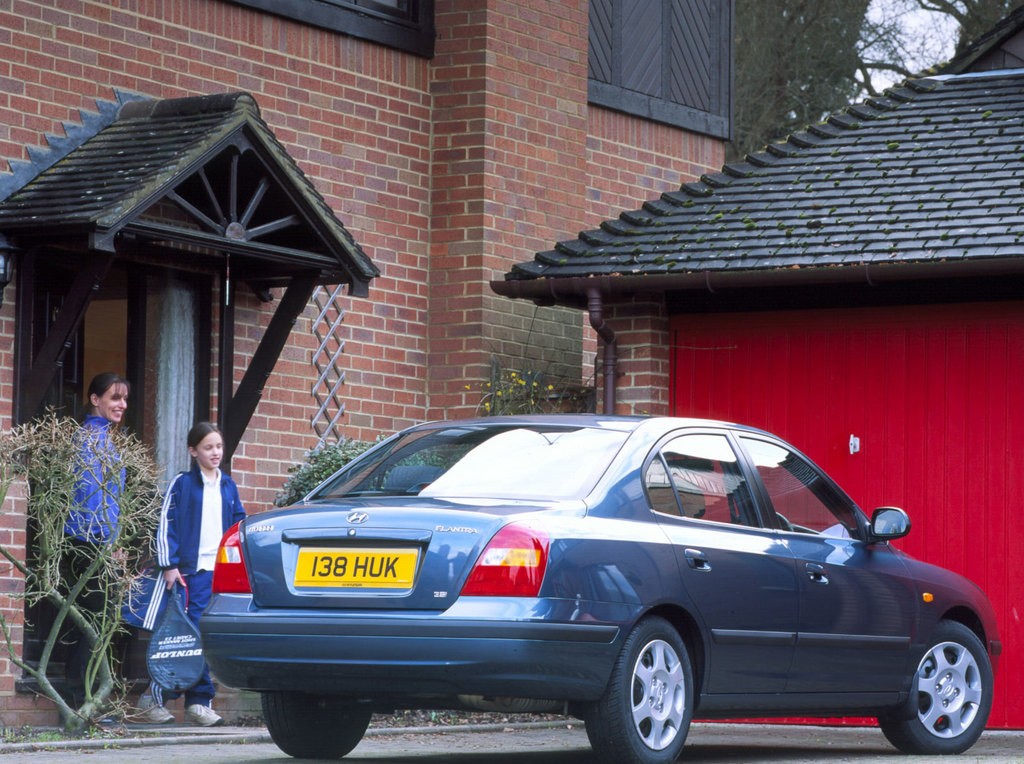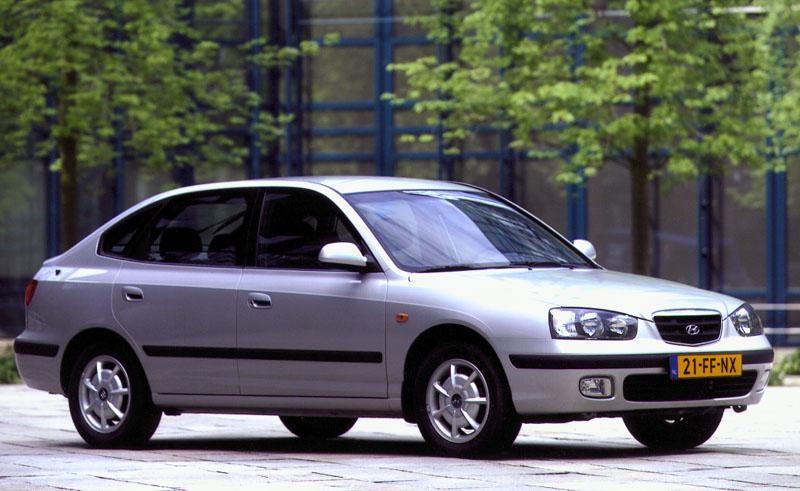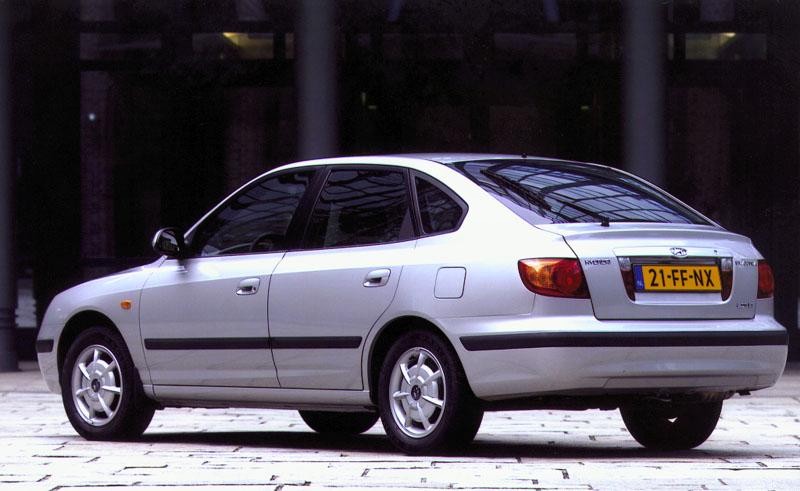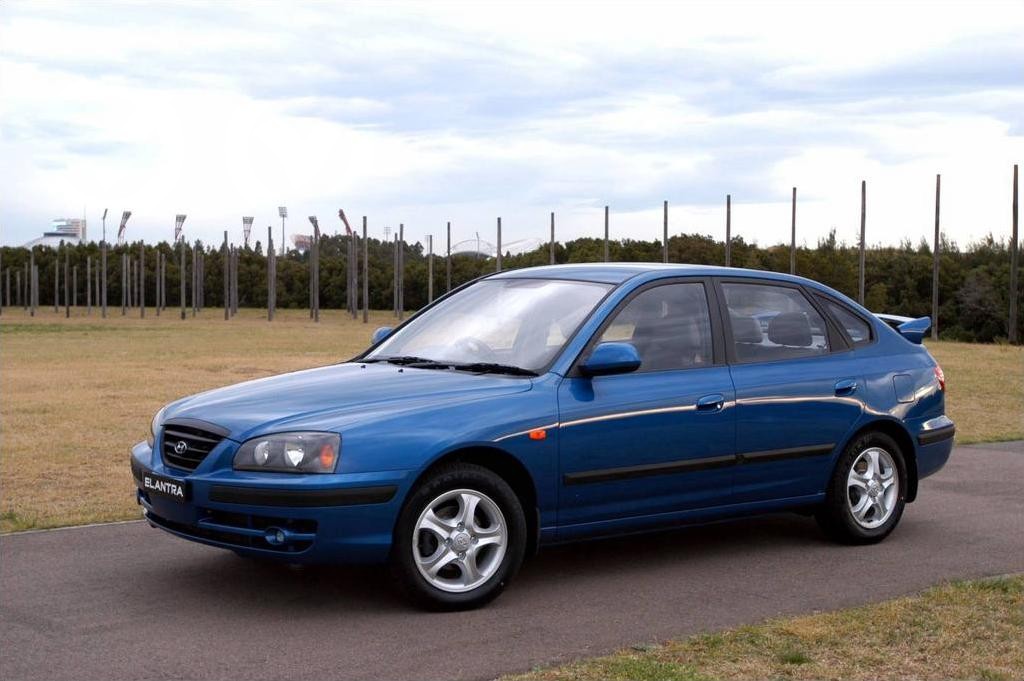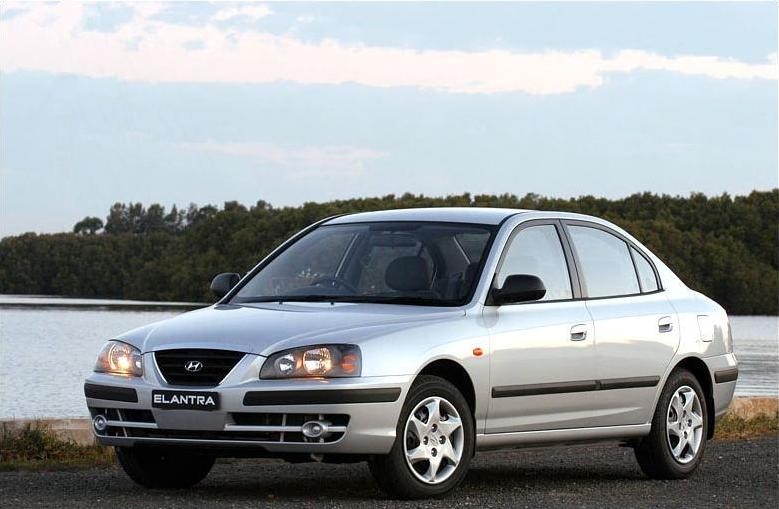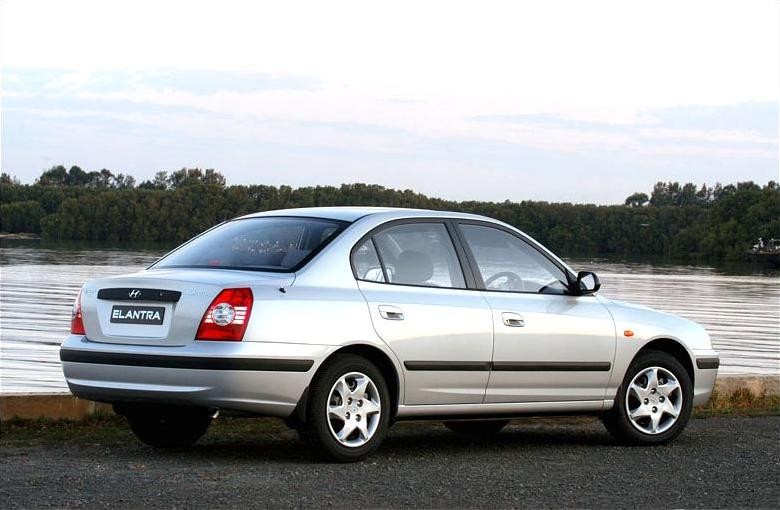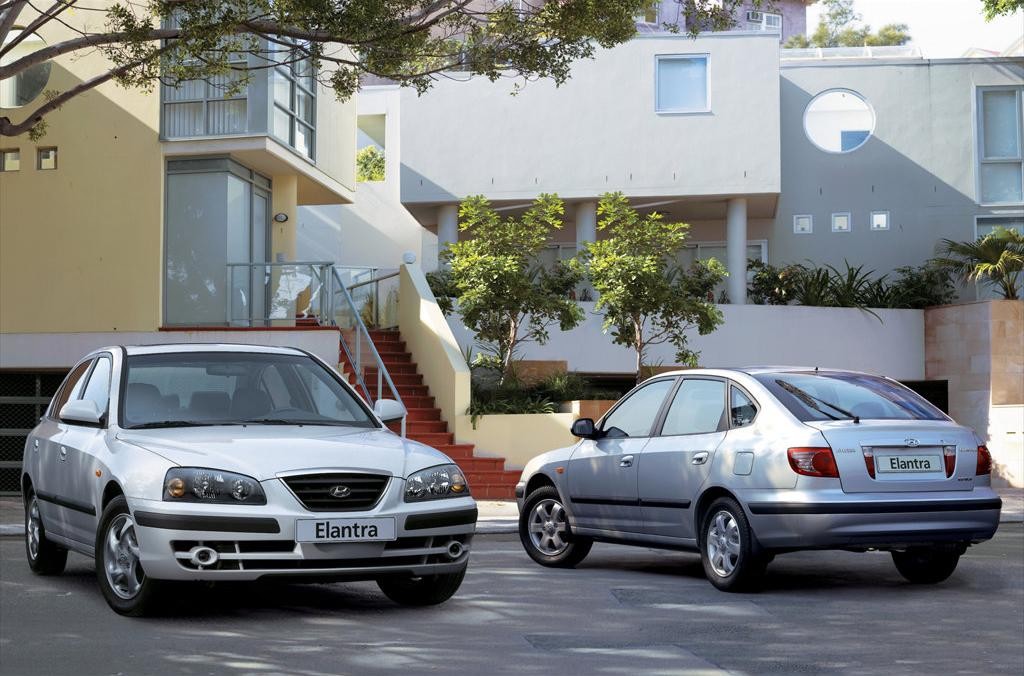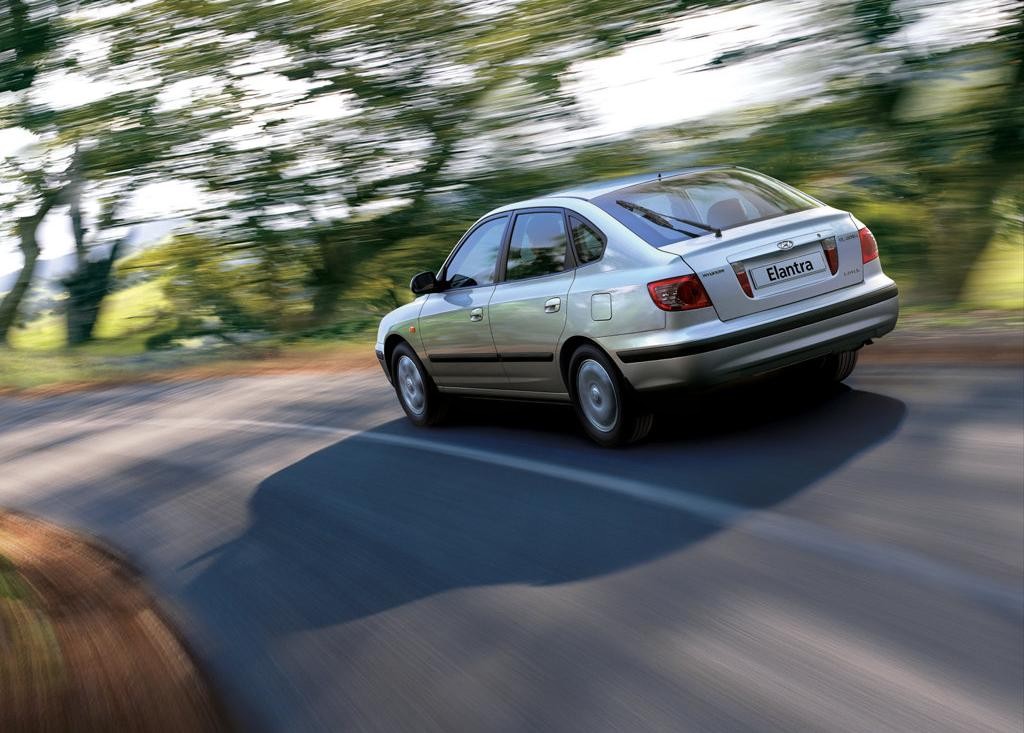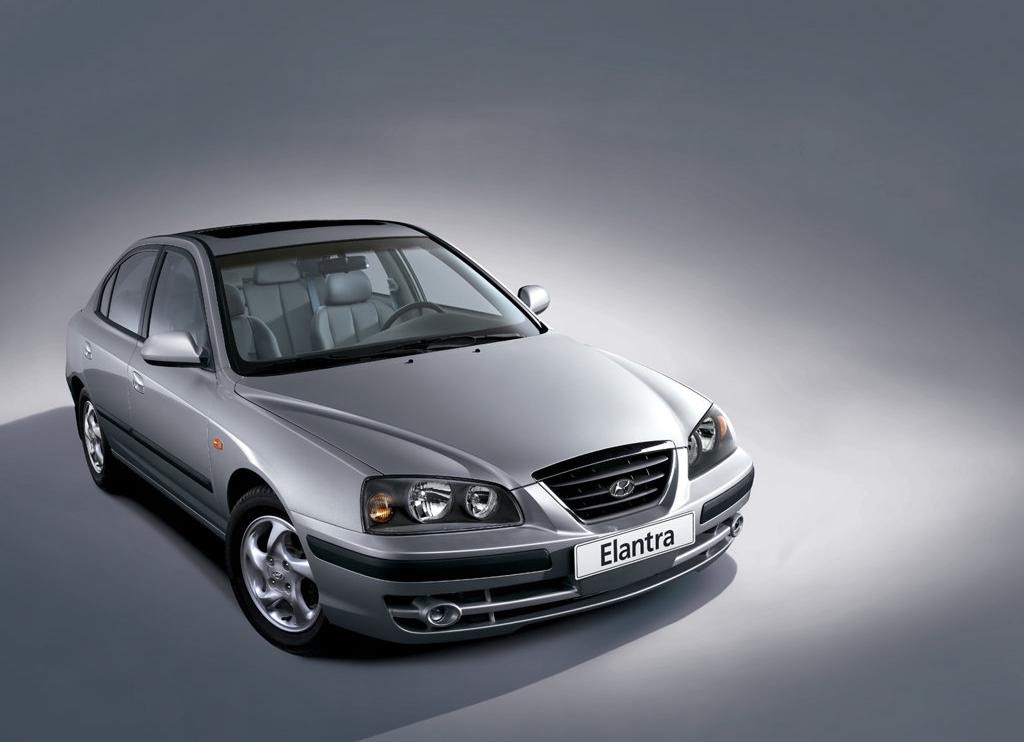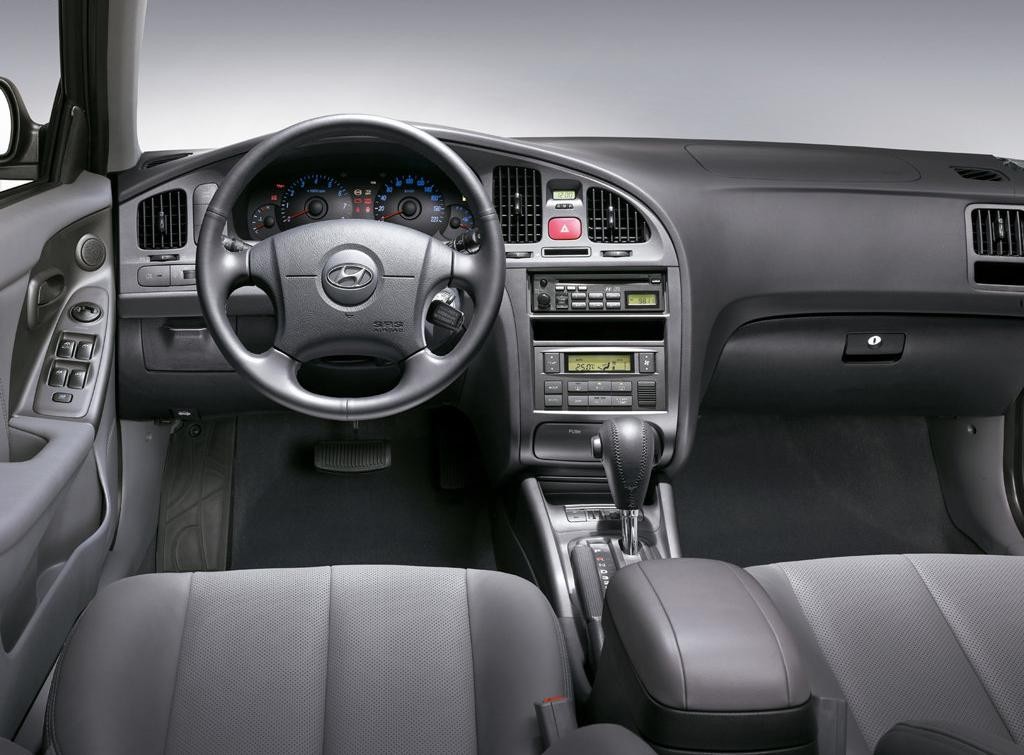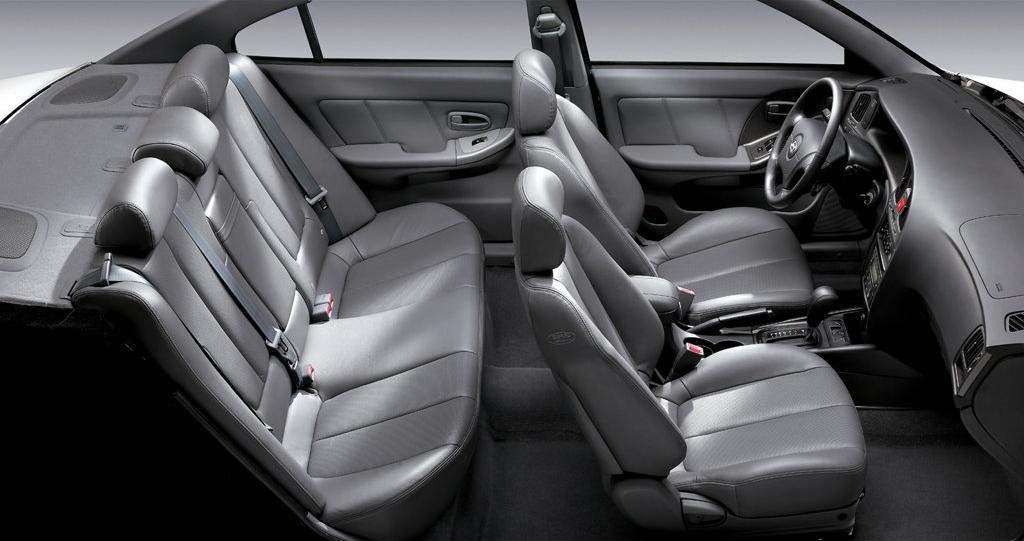
- Willing 1.8- and 2.0-litre engines
- Comfortable ride
- Spacious front seats
- Steering lacks precision and feel
- Front seats lack support
- Automatic transmission slow to kick down
- Variable build quality
- Limited rear seat leg and headroom
Review: Hyundai XD.I Elantra (2000-03)
Overview
Released in August 2000, the Hyundai XD Series I (XD.I) Elantra was available as a five-door hatchback or four-door sedan. Manufactured in Ulsan, South Korea, the front-wheel drive XD.I Elantra was available with either a 1.8-litre four-cylinder petrol engine (for GL variants) or a 2.0-litre unit (GLS variants). In 2003, the range was expanded with the introduction of a GLS Elite variant.
Beta engines
The 1.8-litre G4GM and 2.0-litre G4GF ‘Beta’ petrol engines both had cast iron engine blocks, alloy cylinder heads, double overhead camshafts (chain-driven), four valves per cylinder and compression ratios of 10.1:1. Transmission options consisted of a five-speed manual or four-speed automatic units, the latter featuring ‘fuzzy logic’ (Hyundai Intelligent Vehicle Electronic Control, or HIVEC) which adapted gearshift behaviour to driving and terrain.
Development and dimensions
Compared to its J2 Lantra sedan predecessor, the XD Elantra sedan and hatchback were 75 mm longer (at 4495 mm), 20 mm wider (1720 mm), 32 mm taller (1425 mm) and had a 60 mm longer wheelbase (2610 mm). The XD Elantra also had a stronger bodyshell due to the introduction of reinforced one-piece middle pillar and side sill pressings, a stronger behind-dash crossbar and high tensile steel in the doors’ side impact beams. Furthermore, the XD Elantra was powered by the second generation of Hyundai’s four-cylinder ‘Beta’ twin-cam engines which provided slight power increases, improved fuel efficiency and lower emissions.
Suspension
The XD Elantra had MacPherson strut front suspension with A-shaped lower control arms and independent, multi-link rear suspension with rod-type quad lateral links.
| Variants | Years | Engine | Trans. | Peak power | Peak torque |
|---|---|---|---|---|---|
| GL | 2000-03 | 1.8-litre petrol I4 | 4sp auto, 5sp man. |
97 kW at 6000 rpm | 165 Nm at 4500 rpm |
| GLS | 2000-03 | 2.0-litre petrol I4 | 4sp auto, 5sp man. |
104 kW at 6000 rpm | 182 Nm at 4500 rpm |
| GLS Elite | 2003 |
Safety equipment
Standard safety equipment for the Hyundai XD.I Elantra included a driver’s airbag, anti-submarining front seat pans front and rear seat ramps and front seatbelts with pretensioners and load limiters; the GLS Elite was also equipped with a passenger airbag and ABS. An optional ‘Extra Safety Pack’ was also available which added a front passenger’s airbag and ABS.
Euro NCAP crash testing
In Euro NCAP crash testing , a left-hand drive XD Elantra sedan with dual front airbags achieved a three star adult occupant protection rating with a score of 20.05. In the frontal offset crash test, the Elantra scored 6.09 out of 16 and there was a moderate risk of serious injury for the chest and legs of the driver.
Features: Elantra GL, GLS and GLS Elite
Standard features for the Hyundai Elantra GL included 15-inch steel wheels with 185/65 tyres, a six speaker sound system with CD player, air conditioning, 60/40 split and folding rear seats, central locking, power front windows and mirrors, a tilt adjustable steering wheel and an immobiliser.
Beyond this, the Elantra GLS added 15-inch alloy wheels with 195/60 tyres, front fog lights, power windows and remote central locking; the Elantra GLS Elite was distinguished by its leather-trimmed seats.
Review: Hyundai XD.II Elantra (2003-06)
Overview
Released in October 2003, the XD Series II (XD.II) Elantra introduced new 2.0-litre G4GC ‘Beta II’ petrol engines with continuously variable intake valve timing (CVVT) which provided improved fuel economy and low-rev torque. Furthermore, the XD.II Elantra range was revised to consist of entry-level ‘HVT’ and range-topping Elite variants; upon release and from 2005, there was also a mid-range FX variant.
Visually, the XD.II Elantra was distinguished by its new trapezoidal grille (matt black on liftback and chrome-edged on sedan), reshaped headlights and bonnet, full-width lower air dam, ‘jewel-effect’ tail-light lenses and reshaped tail lights for sedan models. Inside, there was a revised dashboard, new vertical-vane air vents, cloth trim and an Australian-made VDO instrument cluster.
| Variant | Years | Engine | Trans. | Peak power | Peak torque |
|---|---|---|---|---|---|
| HVT | 2003-06 | 2.0-litre petrol I4 | 4sp auto, 5sp man. |
105 kW at 6000 rpm | 186 Nm at 4000 rpm |
| FX | 2003, 2005-06 |
||||
| Elite | 2003-06 |
Safety equipment
Compared to the XD.I Elantra, safety equipment was improved with a front passenger airbag made standard across the range; the range-topping Elite continued to be distinguished by its fitment with ABS. From January 2005, the Elite and re-introduced FX were fitted with ABS and electronic brake force distribution, while the Elite also fitted with front side airbags.
Features: Elantra HVT, Elite and FX
Standard features for the entry-level Elantra HVT were extended to include a CD player with MP3-compatibility, rear power windows, remote keyless entry and driver’s seat with height, tilt and lumbar adjustment. From January 2005, the HVT also featured an automatic power aerial, chrome surrounds for the front grille (previously sedan only) and a body-coloured rear registration plate garnish.
First introduced in 2003, the FX was differentiated from the HVT by its 15-inch alloy wheels and rear spoiler.
Compared to the HVT, the Elantra Elite was differentiated by its wider 15-inch alloy wheels, leather trim on seat and head restraint facings, leather-wrapped steering wheel and gearshift lever, blue-hue instrument lighting and rear wing. From June 2004, the Elite was also fitted with cruise control and, from January 2005, the rear spoiler was omitted and a cargo net added.
2005 Elantra FX
Upon its return in 2005, the Hyundai Elantra FX was fitted with cruise control, a leather-wrapped steering wheel and gearshift lever, trip computer, map lights and blue-hue instrument lighting.
Related links
